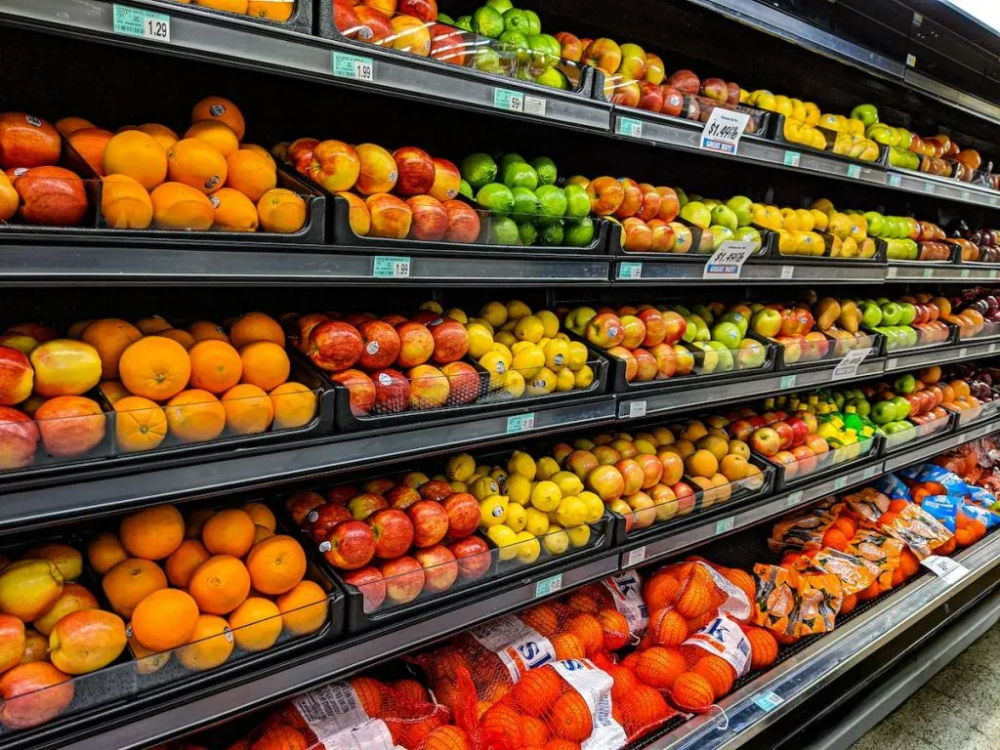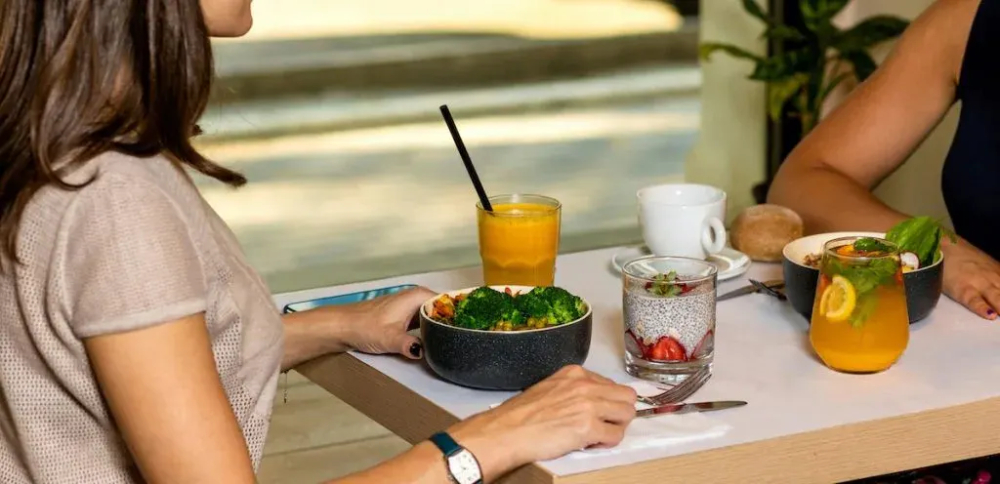The cost of healthy eating in Singapore

Eating a healthy diet has a similar compound effect to saving and investing. You would likely not see the results immediately but give it time and you will feel the "dividends" of more energy and a fitter body to carry you through life.
Right before a new year comes along, many of us almost subconsciously gravitate towards a goal-setting mindset to improve our current state.
Whether it’s to save more money, acquire a dream purchase, or climb a mountain, it is almost guaranteed that high on that list is to lose a few pounds.
There’s no escaping the irony that this usually happens before an imminent bout of festive feasting. Then again, being mindful of making healthy food choices has always been essential to good health.
From the addictive sweet-savouriness of bak kwa to buttery flaky pineapple tarts and an assortment of cookies that lined the coffee tables of almost every house visiting.
It’s safe to say Chinese New Year can present temptations if you’re trying to be more health-conscious.
Looking to make a lifestyle change? Let’s take a look at how much it will cost you.

For the purpose of comparison, we look at Fairprice Online to compare the organic and non-organic products available from different brands. With the exception of olive oil, oats and tomato puree, the price gap for most items is quite minimal.
| Item | Organic | Non-organic | Price Difference |
| Eggs (10 per pack) | $4.90 | $3.75 | $1.15 |
| UHT milk (low fat 1l) | $3.97 | $3.03 | $0.94 |
| SunGold kiwi fruit (pack of six) | $9.75 | $8.95 | $0.80 |
| US Royal Gala apples (900g) | $6.95 | $5.95 | $1 |
| Kailan (250g) | $3.87 | $0.92 | $2.95 |
| Pasta (500g) | $3.56 | $2.73 | $0.83 |
| Tomato puree (500g) | $8.47 | $3.55 | $4.92 |
| French beans (250g) | $2.98 | $2.04 | $0.94 |
| Rolled oats (1kg) | $7.89 | $5.35 | $2.54 |
| Olive oil | $13.49 | $10.59 | $2.90 |
Prices as of Jan 11, 2023
For most foodies, taking a step back when it comes to indulging in our favourite local foods (or fast food) can be a tall order.
But did you know that these popular dishes, from chicken rice to fish soup noodles, can easily exceed the recommended daily sodium intake for both men and women (<2000mg)?
Not to mention the salt and fat content from the liberal doses of sauces that give them the extra kick. That said, no one should feel deprived of eating their favourite foods, just in moderation.

Being able to enjoy home-cooked food regularly is a big step towards improving your long-term health.
Not only do you get to decide your cooking methods and your ingredients, you can also control the amount of seasoning that goes into your food.
While it takes some effort and planning, like most good habits, meal prep is something worth getting used to.
Curating your food intake saves you from eating too many preservatives and additives, which are commonly found in store-bought food.
Here’s a quick look at the estimated costs of preparing a week’s worth of healthy home cooked meals.
These prices do not reflect the discounts and promotions in store or online. If you use certain grocery cards, you may also earn attractive rebates and points for your spending.
| Ingredient | Estimated quantity | Unit price | Total price |
| Red onion (large) | One bag (six) | $1.95 | $1.95 |
| Pre-packed carrots (500g) | One bag (five to six) | $0.96 | $0.96 |
| Traffic Light Premium bell peppers | One box | $4.17 | $4.17 |
| Button mushrooms (200g) | Two boxes | $3.59 | $7.18 |
| Tomatoes (600g) | One bag (seven) | $1.82 | $1.82 |
| Broccoli (250g) | Two | $2.99 | $5.98 |
| Tau Kwa
(Three x 150g pieces) |
Two packets | $1.43 | $2.86 |
| Chicken breast (270g) | Two packets | $3.73 | $7.46 |
| Salmon (150g) | One packet | $16 | $16 |
| Brown rice (2kg) | One packet | $6.30 | $6.30 |
| Soy sauce (reduced salt, 500ml) | One bottle | $4.29 | $4.29 |
| Apples | One bag | $5.95 | $5.95 |
| Banana | Six to seven | $2.60 | $2.60 |
| Rolled oats (1kg) | One bag | $5.35 | $5.35 |
| Mixed nuts | One bag | $7.32 | $7.32 |
| Wholemeal bread (600g) | One bag | $4.30 | $4.30 |
| Total | $84.49 | ||
| Average cost per home-cooked meal | ~$4 |

The best part about living in Singapore, food-wise, is the sheer variety of healthy food options we have access to.
From poke bowls, salads, wraps to high-fibre vegetarian meals such as thunder tea rice, it doesn’t take a lot to keep to a healthy diet on the go.
Here’s a quick look at some of the tried-and-tested healthy food subscription options.
| Shop name | Food preference | Cost of a meal |
| Grain | Omnivore | From $14 |
| Nutrify | Omnivore | From $9 |
| Yummy Bros | Omnivore | From $8.50 |
| Prepped | Vegetarian option available | From $7.80 |
| AMGD | Omnivore | From $12.50 (gold pass) |
| Nutrition Kitchen | Vegetarian option available | From $14.35 for four weeks package |
| Fresher | Omnivore | From $10.90 |
| YoloFoods | Vegetarian option available | From $8.90 |
In the Netflix documentary, You Are What You Eat: A Twin Experiment, four pairs of twins took part in a food experiment which required a lifestyle and diet change for eight weeks. One sibling was put on a plant-based diet and an omnivore one for the other.
By the end of the experiment, half of the twins opted for a mostly vegetarian diet while the other half reduced their red meat intake after experiencing the effects on their bodies, and learning about the environmental impact of red meat consumption.
The rise in obesity and chronic diseases in America can be linked to the Standard American Diet, which comprises largely ultra processed foods that contain excess sodium, saturated fat, and added sugars.
Sadly, this is available not just in the US but across many countries around the world.
Store-bought food contains more salt than necessary to make it last longer, bringing down costs for food vendors and manufacturers.
Nevertheless, it’s heartening that more food businesses in Singapore are getting behind the mission for healthy eating.
Closer to home, in November 2022, the Health Promotion Board launched a campaign to get Singaporeans to reduce their sodium intake by 15 per cent over the next five years.
Fun fact: Singapore’s daily average sodium intake of 3,600mg is well above the World Health Organisation’s recommended daily salt intake of not exceeding 2,000mg (about one teaspoon).
What happens to our bodies when we consume too much salt? A common sign is that heavy bloated feeling, usually due to fluid buildup, accompanied by constant thirst.
In recent times, you may also have noticed more alternatives to salt, lower sodium, and sugar on supermarket shelves. What about organic food? Do the higher price tags for organic products correlate with higher quality?
Tip: To know what any packaged food contains, the first few ingredients will give you a clue. Health Hub has a simple guide to follow if you’re learning to read food labels.
The debate is split between whether there is significant difference in nutrients between organic vs non-organic food.
What is acknowledged is that organic food contains lesser synthetic fertilisers and pesticides compared to conventional produce.
In his research on soil health in organic vs conventional farming, David Montgomery, a soil scientist at the University of Washington, found that "crops grown organically and in healthy soil have less pesticide residues and higher amounts of antioxidant-rich phytochemicals such as flavonoids and carotenoids".

Apart from eating a well-balanced diet, activity levels are also a key factor to good health. The World Health Organisation recommends adults to have at least 150 minutes of moderate-intensity physical activity per week.
In the National Population Health Survey 2022, jointly conducted by the Ministry of Health (MOH) and the Health Promotion Board (HPB) between July 2021 and June 2022, 74.9 per cent of Singapore residents aged 18 to 74 years had sufficient total physical activity.
The largest contributor to total physical activity per week was commuting (44.0 per cent)
While the prevalence of diabetes has declined since 2017, a worrying trend is that more Singapore residents were diagnosed with hypertension and were obese.
Left unchecked, a patient with chronic disease could inevitably face multimorbidity, which is the presence of two or more long-term health conditions.
| Condition | Prevalence among adults aged 18 to 69 years (per cent) | ||
| Hyperlipidaemia | 35.5 | 39.1 | 39.1 |
| Hypertension | 24.2 | 35.5 | 37.0 |
| Diabetes | 8.8 | 9.5 | 8.5 |
| Obesity | 8.6 | 10.5 | 11.6 |
Source: Ministry of Health
In a study of 254,377 patients where the prevalence of multimorbidity was 62.4 per cent, the median annual healthcare cost per capita for patients with multimorbidity was about twice the amount compared to those without multimorbidity ($683 vs $344).
| Disease | Medication |
| Diabetes |
Type one diabetes – $16.90 and $120 per cartridge for insulin injections Type two diabetes – Oral medication between $0.06 to $6.30 a tablet. |
| Hyperlipidaemia | $0.85 per capsule to $4.90 per tablet |
| Hypertension | $0.25 per tablet to $4.90 per tablet |
| Kidney failure |
$50 a month’s medication $2,500 for haemodialysis $1,300 and $2,000 for peritoneal dialysis |
Source: Pharmaceutical Society of Singapore, Channel News Asia
If you eat things you don’t need, soon you will regret not eating the things you need earlier.
Even with the help of health insurance and MediSave savings, the physical, mental and emotional toil of living with disease can bring down anyone’s quality of living.
The common refrain for insurance protection is to get it while you’re young and healthy, and the same could be said for your health maintenance. And it starts with something as simple as what you put into your mouth.
ALSO READ: Thrifty tips for eating clean: A guide to eating healthier on a budget in Singapore
This article was first published in ValueChampion.